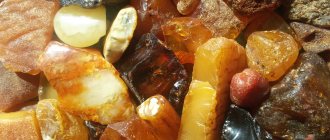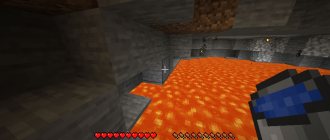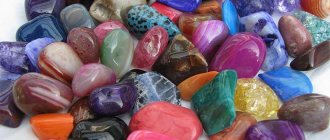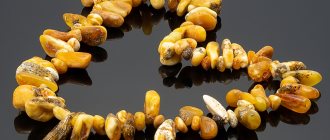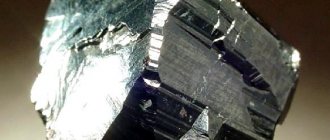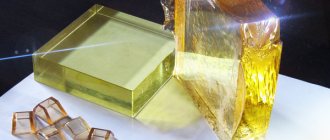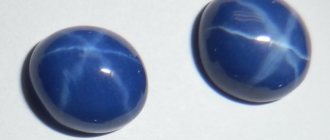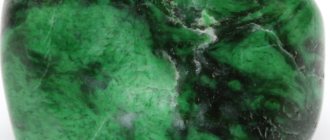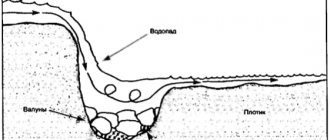How is petrified wood made?
The fossilization process occurs underground when the tree becomes buried under sediment but does not deteriorate due to lack of oxygen.
Mineral-rich water flowing through the sediment brings the minerals into the plant cells, and when the lignin and cellulose break down, the rock remains in its original shape.
In this case, all organic matter is replaced by minerals (often silicates such as quartz), and the original microscopic structure of the tree is preserved. The plant seems to be preserved.
Boxwood - stone tree
Boxwood is very ancient. But few people know that this plant is also called stone tree. Trimmed boxwood bushes were found back in ancient Roman times. But boxwood was called a stone tree because of the exceptional density of its wood. After all, this one is long-lived and can grow for up to half a century. Hedges and various fancy and geometric shapes are made from it. Harder wood than boxwood cannot be found on the European continent. It is used to make small dishes, chess pieces, various small parts for instruments, and smoking pipes. Boxwood wood is highly valued.
Physicochemical characteristics
The hardness of petrified wood is 5.5-6 on the Mohs scale. The fracture is conchoidal. Glass or wax luster. There is no cleavage. The syngony is amorphous. Composition: silica (SiO2) with impurities.
Petrified wood from Madagascar
The presence of certain impurities of chemical elements, such as iron, manganese, copper, in water (mud) during petrification (petrification process) gives the resulting petrified wood one or another color from a fairly wide range of colors:
- carbon - black
- cobalt - green/blue
- chrome - green/blue
- copper - green/blue
- iron oxide - red, brown, yellow
- manganese – pink/orange
- manganese oxide - black/yellow
Types of trees
Not every petrified tree is of artistic interest. For example, in the Moscow region they find black pieces of petrified wood that resembles coal.
There is also wood replaced by pyrite, which immediately oxidizes in air.
Decorativeness is determined by color, pattern, texture. Samples with small contrasting patterns are used for jewelry. Material with large patterns is used for candlesticks, writing instruments, and boxes.
The petrified wood fashion is not a modern trend. Even in the times of Assyria, Babylon and Rome, it was considered an ornamental stone.
Petrified wood can be divided into several types based on its texture:
- spotted - the most common and beautiful variety. Most often they consist of opal, chalcedony, and iron hydroxides. The content and ratio of components vary, so it is impossible to find samples with two identical patterns;
Spotted petrified tree
- lens The structure is formed when large voids in the wood are filled with chalcedony or opal to form lenses. Most often they are oriented linearly. Iron hydroxides, developing in the same directions, emphasize the pattern;
Lens petrified wood
- concentric-zonal. Opal-chalcedony layers form circles repeating the pattern of annual rings. In cross section it has a striped pattern. The color of the stone depends on the deposit;
Concentrically zoned petrified wood
- homogeneous. The fossil is uniformly colored, ranging from white to black, depending on the composition. Zoning is not expressed, but the original texture of the wood is preserved. White opal wood is most often used to make crafts;
Homogeneous petrified wood
- jet-shaped. Most often its composition is carbon-carbonate or carbon-opal. The color of the wood is black with a pronounced concentric pattern. Outwardly it resembles jet or black jade.
Jet petrified tree
spotted tree
It is the most common type of petrified wood. It is characterized by an opal-chalcedony composition with a significant admixture of iron hydroxides. Moreover, the ratio of these three components is variable, which explains the uneven spotty color and texture of the mineral. Sometimes the spotting is caused by relics of wood, which replaces chalcedony, preserving the outlines of the cells against the background of the opal mass. This stone is characterized by a color that includes various shades of brown.
Place of Birth
Petrified wood is often found in volcanic areas where volcanic eruptions have occurred in forested areas. Chinese scientists have discovered fossilized trees along with dinosaur remains dating back 100 million years.
Polished section of petrified wood from Arizona
Significant deposits of petrified wood have been found in different places on Earth: the USA (Arizona), Chile (Patagonia), Egypt, Russia (Central Siberia, Kamchatka, Primorye, Chukotka). Petrified trees have also been found in the European part of Russia.
Trees can be either coniferous or deciduous. The most famous fossilized tree discovery site in the world is the Petrified Forest in Arizona, where petrified Araucaria trunks reach a length of 65 meters and a diameter of 3 meters.
The most famous petrified forests on the planet (usually national parks):
- In Argentina - one of the largest natural monuments in Argentine Patagonia.
- In Belgium - the Gudberg geosite near Hoegaarden.
- In Brazil there is the Paleorotta Geopark.
- In Greece, the petrified forest in the west of the island of Lesvos (probably the largest, with an area of 150 square kilometers), has had the status of a natural monument since 1985.
- In Egypt: petrified forest near the Cairo-Suez road, the area near New Cairo, Maadi, El Farafra oasis.
- In India - Thiruvakkarai near Madras.
- In Canada - Axel Heiberg Island in Nunavut.
- In Libya - hundreds of square kilometers in the Libyan Desert with various fossils.
- In New Zealand - Curio Bay on the coast of the South Island.
- In the USA: Lemmon Park (South Dakota), Ginkgo State Park in Washington State, Grotto of the Redemption Private Park in Iowa, Petrified Forest in Arizona (including the Agate Petrified Wood House), Mississippi Petrified Forest in Flora, State Mississippi, Florissant Fossil Beds National Natural Monument near Florissant, Colorado.
- In Russia - in the Moscow, Kursk, Samara regions.
- In the Czech Republic - Nova Paka.
- In Ukraine - Donetsk region, Druzhkovka.
- In Madagascar.
Ordinary frame (southern)
Frame, or stone wood, has more than 50 species. Most often these are deciduous plants, but sometimes they are evergreen. The frame is also found in the form of a bush. It grows in the tropics, subtropics and temperate zones of the Northern Hemisphere. What is the shape of the stone tree? This tree has a round shape. The leaves are oval (up to 15 cm), elongated, with small serrations. The structure of the leaves is very rigid.
The frame is adapted to arid rocky soil prone to salinity. He is very thermophilic. The frame also takes root well in urban environments and is used for decorative purposes.
The magical properties of petrified wood
In ancient cultures, petrified wood was considered a symbol of the universe. Protective magical objects were made from it, which protected the house and its inhabitants from theft, accidents, natural disasters, predatory animals, enemies and envious people.
Figurines carved from wood fossils and placed in the house contributed to the harmonization of relationships, respect and mutual understanding between relatives.
Among the Slavs, amulets made of petrified wood with protective symbols acted as a kind of energy shield, reflecting negative messages in the form of damage, slander or the evil eye. Carvings of gods and beasts were used in rituals to invoke higher powers, to ask for luck in a hunt or a good harvest.
In modern times, petrified wood is used to attract material wealth and achieve goals as quickly as possible. The stone teaches you to overcome obstacles with dignity, to perceive life-changing changes philosophically, to enjoy existing benefits, to enjoy accomplishments and pleasant little things, without getting hung up on the material sphere.
Petrified wood products and decorations
Petrified wood sink
The beauty, original appearance, as well as excellent strength characteristics of petrified wood make it in demand as a finishing material and for the manufacture of household items or decor. It can be:
- Sinks (cost about $400-$700).
- Separate tabletops ($350-$1000), ready-made tables with legs ($1100 small) and cabinets.
- Fireplaces and bookshelves.
- Various furniture.
- Figured stands (animals, sea creatures, people, gods) for vases or something else ($800-1200).
- Decorative bowls (depending on size $180-$1000).
- Decorative egg on a stand ($10-100).
- Icons ($1900-2000).
- Magic ball ($120-150) and more.
There is a very large selection of untreated pieces of petrified wood on the market today. Their price varies greatly, it is influenced by both the size of the stone and its type, color, complexity of the pattern and place of extraction.
Fossil wood is also in demand among jewelers. Jewelry made from it looks magnificent and extraordinary. Most often, such products are made by hand, and therefore cost a decent amount:
- Necklace – 100-200 dollars.
- Pendant – 20-150 dollars.
- Silver ring with a large insert – $100-150.
- Bracelet – 50-100 dollars.
Talismans, amulets, amulets
Petrified wood has long been used to make all kinds of amulets and talismans. For example, the inhabitants of Ancient Rome were sure that this fossil rock returned its owner from heaven to earth, eliminated illusions, sharpened the mind and helped him solve all problems. In the modern world, this property is also relevant, so people who are frivolous, fly in the clouds, indecisive, stupid and mired in problems should get a talisman made of petrified wood.
Petrified wood figurines of animals and gods are very effective and therefore popular. They are reliable amulets for the home, which they protect from accidents and all kinds of disasters, as well as from thieves and other scammers. Such figurines also improve relationships between those who live under the same roof, bring family members closer together and bring happiness.
There is a belief that if you stroke a petrified wood amulet before leaving home and promise to return, then nothing will happen to the person. You should also order the figurine to guard the house and maintain order in it, then the “fossil guard” will reliably protect the home from any adversity during the absence of its owner.
When going to a crowded place, you should wear a ring and/or bracelet with petrified wood. Such a talisman will protect against “evil eyes” (envy, damage, the evil eye) and “long arms” (theft or violence).
This is interesting!
Feng Shui also recognizes the power of petrified wood and correlates it with growth energy and mental fortitude. If you place a piece of fossil wood in the south-eastern side of the house, then financial well-being and monetary luck will certainly come to its owner.
Medicinal properties
Lithotherapists unanimously recognize the unique healing power of petrified wood, aimed at restoring the entire body, restoring its tone and strength in order to prolong life.
Small plate-like cuts of stone wood, which should be applied to sore spots, are widely in demand in lithotherapy. Such a procedure will, at a minimum, relieve pain and swelling, and at best, completely heal the diseased organ.
Once upon a time, the Mongols, by applying plates of fossil wood to the joints, cured arthritis. The same method was used to treat any ailments of the musculoskeletal system, pressing cuts of petrified wood to the spine and other problem areas.
All these healing abilities are recognized by modern lithotherapists, and they also believe that petrified wood can:
- Normalize blood pressure, calm the heart rate, relieve stress and nervous tension. In this case, beads are most effective.
- Relieve any pain, including injuries.
- Nourish with vitality, raise the tone of the body, promote physical activity of a person.
- Strengthen the effect of medications, especially those that fight infections and viruses.
- Eliminate mental retardation, restore memory and concentrate attention, which requires looking at a sample every day, trying to remember even the smallest details.
This is interesting!
In ancient times, the Udmurts called the petrified tree “devil’s fingers,” because they believed that these were the broken off fingers of the “merman,” that is, Vumurt or the “master of water.” This belief did not stop them from using pieces of fossil wood to treat many diseases.
Areas of application
Petrified wood has been used as a raw material for jewelry since ancient times. The value of the samples is associated with the originality of shape, design and age of many millions of years, which is valued by collectors.
Petrified wood sculptures
This decorative stone is very easy to process. It is perfectly cut, ground and polished, resulting in a unique glass sheen. When processed, it does not lose its wood texture.
Varieties of petrified wood that have a fine contrasting pattern are used to make inserts and small jewelry, such as beads, bracelets, etc. Decorative stone with clearly defined lines of growth rings is especially valuable. When making jewelry, such samples are often combined with precious metals, other stones and glass.
Petrified wood is also used in the production of various souvenirs and interior decoration items. These can be pens, ashtrays, vases, boxes, shelves, countertops and much more. For the manufacture of such products, a material is often used that is characterized by less pronounced zoning and has a spotted-striped or large-spotted pattern.
Artificial petrified wood is used in interior decoration and park areas.
The petrified tree is considered the emblem of the Canadian province of Alberta and the American state of Washington.
Where are tree fossils found?
Petrified trees are most often found in areas where volcanic eruptions have occurred. The most famous place where this unique material was discovered is the so-called “Petrified Forest”, located in the state of Arizona and which is one of the US national parks (since 1962). The length of the petrified trunks reaches 65 m, diameter – 3 m.
There are also a number of other petrified wood deposits located in various parts of the world. The most famous and significant fossilized forests are located in Argentina, Brazil, Belgium, Greece, Canada, India, New Zealand, Russia, Ukraine, the Czech Republic, Georgia, Armenia, etc. Many territories are national parks or natural monuments.
Prices
Prices for products made from this material are formed not only taking into account the value of the petrified wood itself, but also taking into account the cost of the craftsman’s services, depreciation of equipment, transportation, etc. Therefore, it is almost impossible to determine the exact cost without carefully calculating all costs and analyzing the market.
However, according to statistics, the average cost, for example, of coffee tables made of this material ranges from 70-120 thousand rubles. Large tables can cost 300 thousand, or 400, and even more.
The average price for wash basins is determined in the range from 40 to 60 thousand rubles. At the same time, such a product will serve for years and looks very stylish. There are many uses for fossilized rocks. People value them primarily because of their aesthetic properties, durability and exclusivity.
As for jewelry and accessories, it is almost impossible for a layman to determine the cost of the petrified wood itself. Moreover, they always come as an addition to the main material, gold or other precious metal.
Plant care
The tree is not demanding of the external environment and growing it is not difficult.
Resistant to droughts, even prolonged ones. Easily withstand strong winds. Despite this, at a young age the plant must be watered periodically.
Southern hackberry is heat-loving, but also adapted to cold. It tolerates short-term drops in air temperature down to twenty-five degrees Celsius without any particular consequences.
However, a young tree requires shelter from frost for up to one year. It does not react to gas pollution, wind and smoke. It is adapted and feels good on rocky soil with poor moisture, even saline soil.
In the first years of life, the tree's growth is rapid, but then it slows down. The Chinese variety of bonsai at home requires abundant and regular watering and high air humidity during the hot season.
This variety does not tolerate too wet soil. It is also fed in the spring and autumn, using organic fertilizers to strengthen the branches.
Soil for planting
The plant can grow on almost any soil, preferring rocky, not heavily moistened, alkaline and acidified. However, it can grow even on saline soil.
Transplantation and propagation
When using the frame decoratively, it needs to be replanted once every three years. This is done at the beginning of the spring period. In this case, up to half of all the roots of the plant are cut off, and the shoots are shortened. In addition, in mid-spring, regulating pruning of branches is carried out to form a crown of the correct beautiful shape.
The plant reproduces by seeds, layering and shoots.
The seeds are sown in the fall, after fermenting the fruits for three days at room temperature. In the southern regions, this can be done in open ground, choosing a well-lit place for planting that is open to direct sunlight.
The sowing depth is three centimeters. In the middle zone, the sown seeds are placed in a room with a temperature of about ten degrees Celsius. Spring sowing of seeds is also possible. To do this, they should be stratified at five degrees Celsius for three months.
Application of stone wood
The frame is widely used not only for decorative purposes. Due to the unique properties of its wood, it is used in construction, making wooden crafts and carvings. The tree that is also used is common oak. Musical instruments, knife handles, beads, canes, frame carpentry are very beautiful and have a long service life.
The fruits, roots and bark of the tree are used in medicine. Decoctions of them strengthen the heart, increase immunity, and are also taken to treat diarrhea and dysentery.
Oil similar to almond in taste is squeezed out of the fruits, and they themselves are used as food. The leaves can be used as livestock feed.
How to distinguish from a fake
Petrified Wood
Shell Petrified wood is a mineral structure that took several million years to form. Organic substances in it are completely replaced by minerals. Of course, there may be inclusions and even fossilized insects, but this is rare. The most important indicators that make a fossil especially valuable are:
- Bright colors and play of colors.
- Intricate texture. The main thing is that it has a pronounced plant character (growth rings, knots, bark irregularities, etc.).
- Medium hardness and uniformity. The fossil should not flake or disintegrate easily.
- The overall size of the fossil and the size of the plant that formed it. Small plants (young trees) can only be used to make decorations. And the larger ones include tables, washbasins and even mantelpieces.
It is important that anyone recognizes a tree at first sight. Otherwise, the specimen will be considered only an ordinary sedimentary mineral structure. Yes, it can also be used as a decorative element. But the cost will be several times lower.
Petrified Wood Ball
For a material to be called “petrified wood”, it must have the following properties:
- Have a well-preserved three-dimensional structure of the plant that formed it.
- Come from a different geological era. At a minimum - from the Pleistocene (now we live in the Holocene era, which began about 120,000 years ago). But this is rare, most fossils have come to us from the Paleozoic and Mesozoic eras, that is, they are already from 66 million to 500 million years old. Theoretically, a tree can petrify in 100 years. But such samples will not have the required hardness. They will disintegrate under slight pressure and are not suitable for the production of decorative elements. The older the petrified wood, the higher its value.
- Have as many metal inclusions as possible. Quartz crystals are colorless, but metal oxides color the fossil like a child's coloring book:
- Manganese makes it pink or even orange. And its oxide is all shades of yellow, right down to the darkest.
- Iron occurs only in oxide. Gives all shades of brown - from brown, almost black, to yellow.
- Copper, depending on the state of oxidation, produces colors ranging from green to blue.
- Chrome and cobalt are also painted blue-green, but with different shades.
- The remains of organic compounds produce carbon, which forms all shades of gray and black.
- Mined from one of the famous petrified forests. There are many such places in the world, but each of them has its own individual characteristics.
- Handled by an experienced artist. The petrified tree itself is just a piece of stone, albeit a beautiful color with an original texture. But to turn it into an expensive finishing material, you need to be creative. Select the brightest elements and give them the desired shape. Very few people know how to work with stone, so some things made from fossils have high artistic value.
A tree that became a stone
From year to year, many trees die on earth. Typically, wood debris gradually decays, being processed by microorganisms. But if for some reason the air supply to the dead tree is blocked, then complete oxidation does not occur. Trees may be under water, covered by volcanic ash, landslides or sand dunes. The trunks and branches preserved in this way gradually become mineralized. Experiments have shown that if a thin section of a pine branch is placed in a solution of iron sulfate for several days, the wood will become so saturated with it that after burning it remains as if a casting repeats the structure of the cells and vessels of the branch. Something similar happens under the influence of groundwater saturated with various minerals. Over millions of years, minerals can completely replace the entire organic part of wood. To date, more than 60 minerals are known that can replace wood tissue. Most often these are silicas and pyrites. Petrified wood can come in a variety of colors. It can be yellow, pink, white, green, black, gray, red-violet. The pattern on the saw blade repeats the growth rings and the pattern of blood vessels. Sometimes voids form in which crystals of pyrites, crystals, and amethysts grow.
Petrified wood from Madagascar Photo: Wikipedia
Petrified acacia forest Photo: Wikipedia
Petrified wood pellet, mottled texture. Crimea Photo: Wikipedia
Geologists have found fossilized spruce, pine, araucaria, oak, birch, alder, elm, laurels... It is known that coniferous trees are easier to mineralize than deciduous trees, most likely because, being impregnated with antiseptic resins, they are less susceptible to rotting, and also because that coniferous wood is richer in silica. In some plants, minerals can be formed even during life. For example, chalcedony and opals appear in the internodes of Indian bamboo. In the East, such “bamboo gems” are called tabashir. They are used to make magical necklaces and are considered a powerful healing potion.
In the state of Nevada (USA) there is a mine called “Royal Peacock”, where fossil sequoia tree trunks replaced with noble black opal are extracted from the ground. In the clays formed due to the decomposition of volcanic ash, one can observe all stages of the replacement of wood with opal - from fragments that can still burn to a noble gem that shimmers with all the colors of the rainbow. In Utah, two fossilized tree trunks were once found among the sandstones, completely replaced by uranium-vanadium minerals. It is clear that such a petrified tree could not serve as a jewelry material, but uranium, radium and vanadium ores worth 3 million dollars were extracted from it.
Petrified Wood Crafts:
Photo: patlah.net
Photo: patlah.net
Photo: patlah.net
Photo: world-jewellery.livejournal.com
In Georgia, near Akhaltsikhe, a whole area of petrified forest has been preserved, replaced by bluish chalcedony. The mineral grows in a circle, like bark, leaving a cavity in place of the core of the trunk. This formation is called tubular agate.
Petrified Wood Jewelry:
Photo: world-jewellery.livejournal.com
Photo: world-jewellery.livejournal.com
Tree trunks replaced by amethyst and chalcedony are found in Mongolia. The petrified wood mined near Lviv is famous for its exceptional beauty. It has a delicate yellowish-brown color with a gray or pale pink tint and a beautiful finely striped pattern like agate. In the northeastern part of Donbass, huge fossilized trunks of ancient araucaria were found, 15-20 m long and more than a meter thick, whose age is 260 million years; fossilized trunks of ancient spruce and larches were discovered on the shores of the Tatar Strait in the Far East; trunks of fossil cedars, cypresses, pines and spruces are found on the Kerch Peninsula in Crimea; stone trunks of cypress trees are known in the Volga region.
Still, the most impressive natural monuments of this type are the heritage of the North American continent. The vast stone forest is among the wonders of Yellowstone Park, but the most famous is the Petrified Forest National Park. This forest covers an area of about 600 square meters. km. Individual specimens of fossilized trunks reach a diameter of up to 3 m and a length of up to 65 m.
“There are no marbles and malachites that could compete with polished petrified wood,” writers Ilf and Petrov wrote in their book “One-Storey America,” sharing their impressions of visiting a protected stone forest in Arizona. – A small museum has been built in the reserve, where blocks of petrified wood are dissected. They are sawn and polished. The cut surface, preserving all the lines of the tree, begins to sparkle with red, blue and yellow veins.”
Nowadays, Arizona petrified wood is a valuable jewelry material, but it was once used more wastefully. Among the wonders of the park, the so-called Agate House is especially famous. This structure sits atop a hill in an area of the park known as the Rainbow Forest. It belongs to the archaeological culture of Pueblo II. The age is estimated by experts to be approximately a thousand years, plus or minus one or two centuries.
Agate House, photo earth-chronicles.ru:
The Puebla Indians are a group of peoples living in the southwestern United States. Their original occupation was settled intensive agriculture. The name of the tribes was given by their remarkable settlements - multi-room fortified houses. Actually, the fortresses are called pueblos. Several cultures fall into this category: Anasazi, Mogollon, Patayan, Salado, Hohokam. Some of their settlements are still inhabited to this day.
The usual material for pueblos is sandstone, but the structure in the Arizona park is made entirely of pieces of petrified wood, replaced mainly by chalcedony. They are held together with clay mortar. For a pueblo it is a relatively modest structure, with only eight rooms. Researchers found it badly damaged, but in the 30s of the 20th century, partial restoration was carried out under the leadership of Cornelius B. Cosgrove, a member of the anthropology laboratory of the Museum of New Mexico. The height of the walls of the restored Agate House ranges from 1.5 to 3 m, but experts note that the reconstruction does not fully correspond to the original. At the same time, excavations were carried out in the surrounding area, which showed that hundreds of similar buildings once existed.
“Agate House”, photo earth-chronicles.ru:
However, the value of the park as a source of jewelry or building material is hardly comparable to its scientific value as a paleontological site. When mudflows buried the forest during the Triassic geological period, about 225 million years ago, they preserved an entire biocenosis. So specialists can deal not just with individual fossils, but also study the connections and interactions of plants and animals that served as their “casting mold”. There is something similar in the Russian Far East, not far from Blagoveshchensk. There, paleontologists discovered many animals of different species, including dinosaurs that died at the same time as a result of a natural disaster. But the Blagoveshchensk sites remained below the surface, which makes the search for fossils a very labor-intensive task. But American researchers were lucky. At the very end of the age of dinosaurs, about 60 million years ago, tectonic movements of the lithosphere raised the Colorado Plateau, and then erosion of soft rocks completed the job, and the ancient landscape again appeared on the surface.
Nine species of trees have been identified in the Arizona stone forest. The most common species is the Araucaria. Ferns, cycads, and ginkgo are also found here. In addition to tree trunks, imprints of leaves, stems, even pollen and spores have been preserved. Insects, fish, and large vertebrates, including early dinosaurs, were found here. The preservation of some samples even makes it possible to study the cellular structure.
At the end of the story about the Arizona diva, it is perhaps worth mentioning that in these parts the action of a film created in 1936 takes place, which has long become a film classic, starring such stars of old American cinema as Bette Davis, Leslie Howard, Humphrey Bogart. The film is called “The Petrified Forest”. But what’s interesting is that this dream of a tourist and researcher is presented in it as a gloomy, dull place from where the heroes, subtle and artistic natures, dream of escaping at any cost and going somewhere to Paris. Truly, it is good where we are not.
Found a typo? Select a fragment and press Ctrl+Enter.
Tags: Author's column by Bespalova
Previous article Natural imitators and “false stones”
Next article Ammonites, belemnites and other “unseen beasts”
Provided by SendPulse
Likes 0
- 0
- 0
- 0
- 0
How to care
Caring for petrified wood products is quite easy. You just need to remember a few rules:
- If this is a piece of jewelry or a small item, then it should be stored individually or wrapped in soft cloth. The mineral is quite hard and not at all brittle, but many precious gems can scratch it.
- Products should be cleaned with soapy water and a soft sponge, followed by thorough rinsing with cool water.
- Do not use abrasive products or those based on acids (acids corrode the coating, and abrasives can scratch it).
Who is suitable according to the horoscope?
Stone tree is favorable for all zodiac signs.
- Aries, armed with petrified wood, will become inaccessible to any negative energy - damage, evil eye, envy and hatred. At the same time, he will be fueled by the forces of the fossil “comrade” and will achieve success in many areas of his life. This is especially true for financial well-being.
- Taurus will become more assertive in achieving their goals, and the mineral will make this “path less bumpy.” Representatives of this sign will also stop getting angry over trifles and showing aggressiveness towards other people’s opinions, which will have the best impact on their relationship with others and on career growth.
- For Gemini, petrified wood will help smooth out the duality of nature and become more stable in their decisions. They will become more patient and persistent. As a result, things put off until later will be resolved much faster, and the financial “takeoff” will not take long to arrive.
- For Cancers, the “fossil friend” promises great happiness and luck. Representatives of this sign will begin to have their most secret dreams come true one by one. Cancers will become more positive and sincere in their communication, and will also notice clear improvements in their health.
- For Leos and their loved ones, petrified wood will become a reliable shield from failures and negative messages. It will also help them make useful contacts, discover their leadership qualities and become a good leader.
- Virgos will get rid of negative emotions, remove the “gray veil” from their eyes, and begin to assess what is happening exclusively positively and optimistically. They will be able to forget about their complexes, become more relaxed and self-confident.
- Libra will gain mental acuity, develop logical thinking and speed up their reactions. All important and complex life tasks will be solved as quickly as two, and the reserve of strength will not run out, but will only increase. Loneliness will subside, loved ones will return, lost relatives will be found, and ever-busy friends will start dropping by for tea.
- For Scorpios, petrified wood will help them hide their shortcomings more deeply and highlight their strengths, which others will begin to notice. Representatives of this sign will learn to find compromises and get along even with difficult people. They will also learn the power of their own Self and feel capable of “moving mountains.”
- Sagittarius will become wiser, they will learn to understand the meaning of other people's actions, respect other people's opinions and appreciate what they have. The fossil mineral will teach them to sense lies, distinguish between deliberate deception and hypocrisy, and avoid traps set by enemies, envious people or competitors. Sagittarius previously had well-developed intuition, but now they will learn to hear its prompts within themselves and listen to them.
- Capricorns will improve relationships with relatives, in particular, mutual understanding will be established with their spouse, parents and children, and warm communication will be established with those more distant. Petrified wood will also help representatives of this sign begin to do what they love, not only as a hobby, but also to receive real material benefits.
- Aquarians will become more hardworking. They will stop shifting responsibility to others and will begin to take the initiative into their own hands more often, which will earn the respect of many - their other halves, friends, colleagues, bosses. All this will significantly improve their quality of life.
- Petrified wood will make fish more energetic. It will push them forward every time they start to doubt and give up. The result will be fulfilled dreams, improved financial situation and increased self-esteem.
Sources and literature
- Bank G. -In the world of gems. M: "Mir", 1979
- Barsanov G.P., Yakovleva M.E. Mineralogical study of some ornamental and semi-precious varieties of cryptocrystalline silica. // New data on minerals. M. 1981. Issue 29
- Kulikov B.F., Bukanov V.V. Dictionary of semi-precious stones. — 2nd ed., revised. and additional - L.: Nedra, 1989. - P. 38. - 168 p.
- Schumann V. World of stone. Precious and ornamental stones. - M.: Mir, 1986. P.208.
- Schumann V. World of stone. Rocks and minerals. - M.: Mir, 1986. P.48.
- Description of petrified wood on Wikipedia ru.wikipedia.org
5 / 5 ( 2 voices)
Colored stones of the Transbaikal region
The site is dedicated to the problems of gemstone geology of Eastern Siberia - the Trans-Baikal region, within the borders of the Irkutsk region, the Republic of Buryatia and the Trans-Baikal Territory. In addition to geological reviews of the most interesting and significant deposits of gemstone raw materials, the pages of the site report on methods and techniques for processing various jewelry and ornamental minerals of Siberian deposits, the history of discoveries and developments of deposits of jewelry stones, photographs of minerals and information on the geological and gemological bibliography of the region with a brief annotation are provided published materials on this topic.
Site offers: collectible and rare samples of minerals and rocks of the East Siberian region are offered for sale in the online store (aquamarine, axinite, amethyst, apatite, beryl, lapis lazuli, corundum, marble onyx, jade, ophiocalcite, carnelian, sapphirine, serpentinite, tourmaline , chalcedony, chiastolite, charoite, brushes of magnetite and colored hematite, jasper and others).
Minerals: this section provides general information about the most interesting, common or rare minerals of the predominantly Siberian region. The information does not claim to be complete.
Stone cutting history of Siberia
...A motley crowd near the Obruchev monument in Irkutsk. You can hear the words: “cut, cabochons, raw materials...” - fragments of the surviving gemstone era of the “stagnant period” of the former country....
...It all started much earlier. Back in the 19th century, the handicraft industry of jet processing arose in Siberia. Small items of everyday use and decoration of the iconostasis of the main cathedral of Irkutsk brought fame to the Siberian jet. However, it took almost 100 years for a special mining and geological service to be created by order in 1966, the main task of which was targeted searches for deposits of precious and colored stones in the region... Articles
Modern articles devoted to semiprecious stone objects of Eastern Siberia: jade, lapis lazuli, collectible and rare minerals... Here the author of the site provides his subjective comments on some popular scientific publications of geological content, which from time to time appear in the information (printed and virtual) space (for example , “Minerals - Treasures of the Earth”, collections of minerals, etc.).
Photo archive
The most interesting photographs of minerals from various Siberian deposits
Polished ametrine plate with one of the veins of the pegmatite field of Uro-Suvo (Buryatia).
Minerals and their processing:
The section summarizes information about the most famous Siberian minerals, methods of their processing and use in jewelry and stone cutting. Technological processing methods for a specific mineral or rock are given in brief form.
Actinolite (jade) cat's eye is a parallel-fibrous, massive, usually translucent material ranging from light yellowish-green to golden brown and brownish-green in color, occurring as veins and lenticular inclusions in ordinary jade. In the region, such material comes in noticeable quantities from the Ospinskoye deposit of the Eastern Sayan...
Personalities
Outstanding geologists, scientists and practitioners, professionals and amateurs who have made a significant or decisive contribution to the search, exploration and development of deposits of precious, colored and collectible stones in Siberia.
Bibliography
A list of works on the gemstone theme of the Transbaikal region, with a brief annotation by the author of the review...
Volin A.I. From a trip to various deposits in the Baikal region. Irkutsk, 1930
Manganese ores along the river are briefly described. Tbilti and a visit to lapis lazuli deposits in the Baikal region. The Malo-Bystrinskoye field is assessed as the most promising of all known.
Dravert P. Opals in the Yakut region. Kazan, 1915
Mention of chalcedony group minerals, opals, petrified wood, carnelian and other minerals along the Vilyui and Lena rivers and their tributaries.
Banknotes: Excerpts, banknotes, quotes from statements of famous people found in published materials on gemstone topics of the Siberian region, Russia, the world... about geology, life...
Lawlessness in geology: Modern morals in the geological community, maintenance and licensing of geological exploration, legislation, government chicanery...
